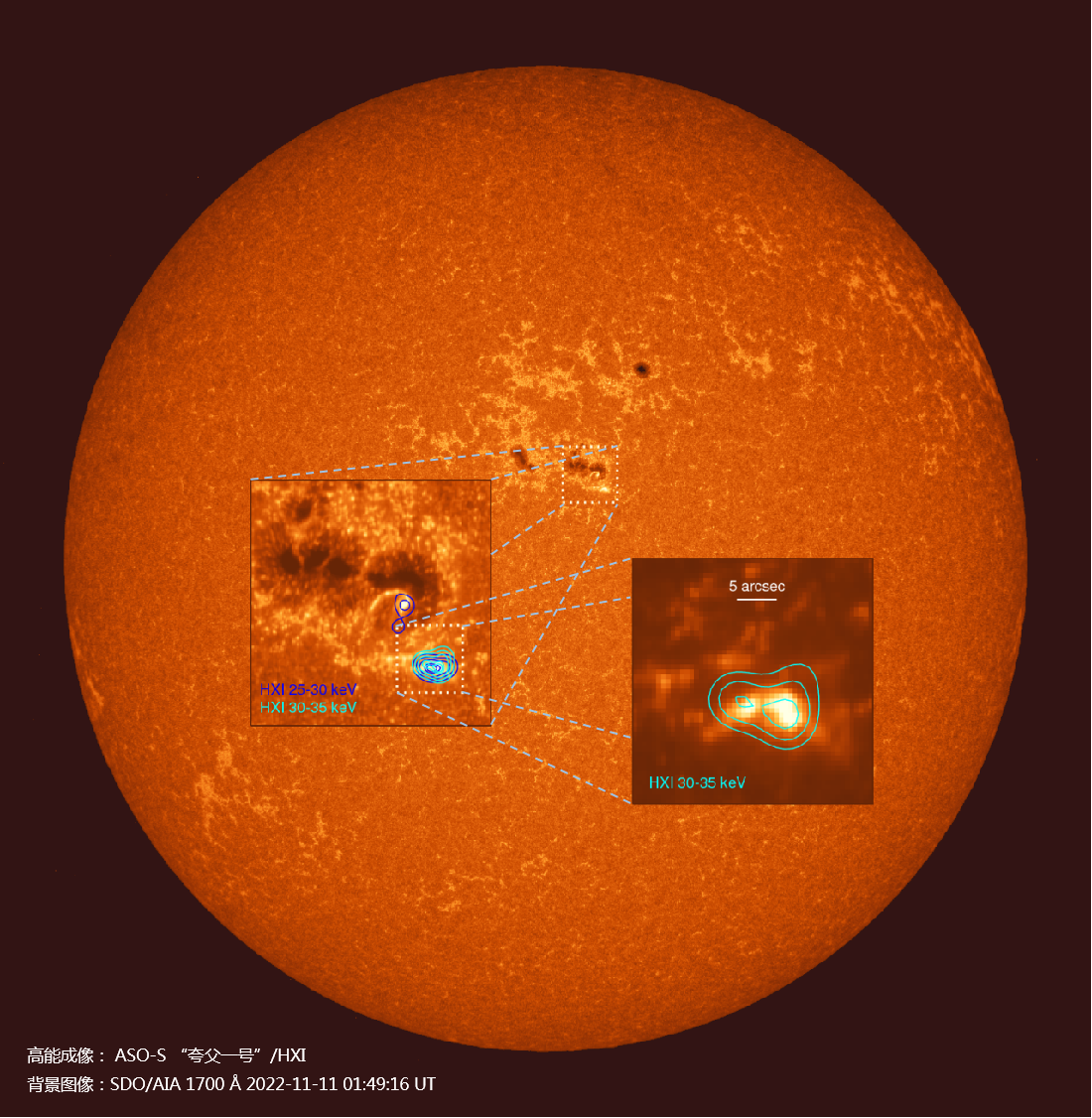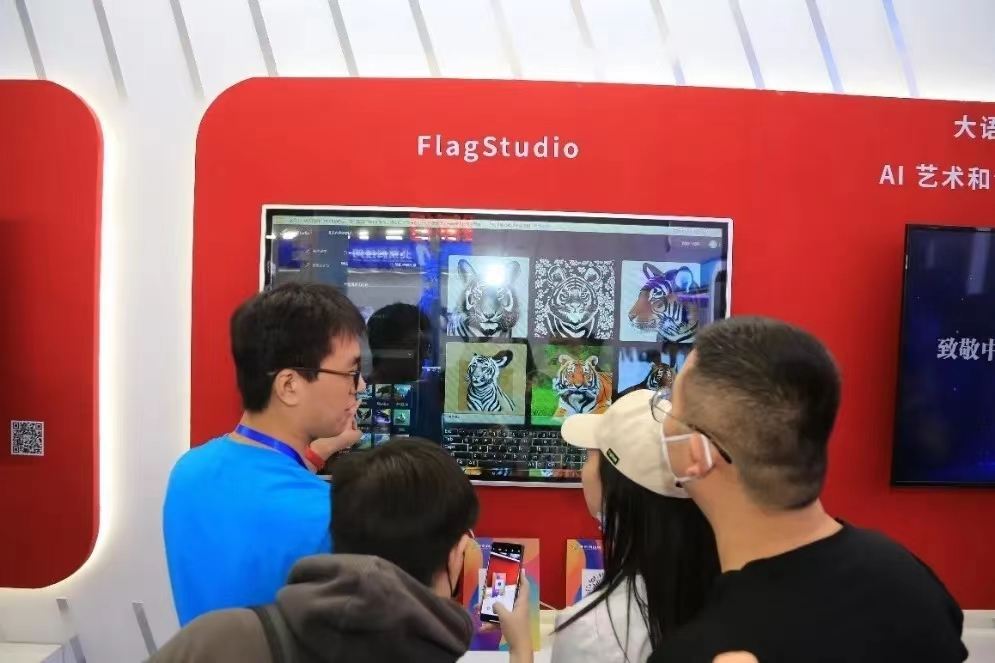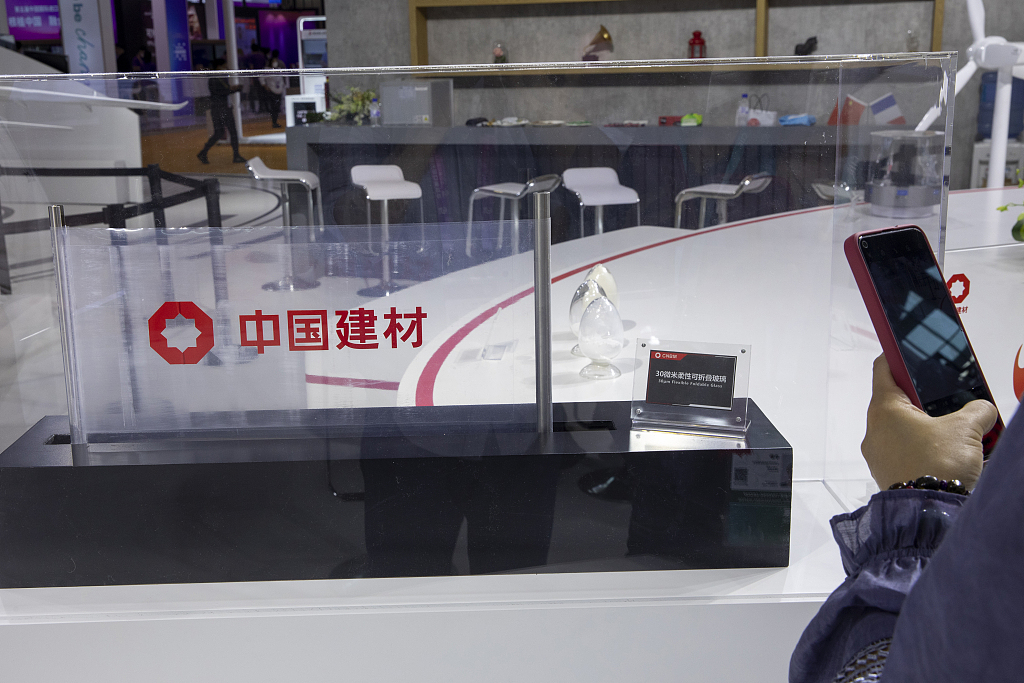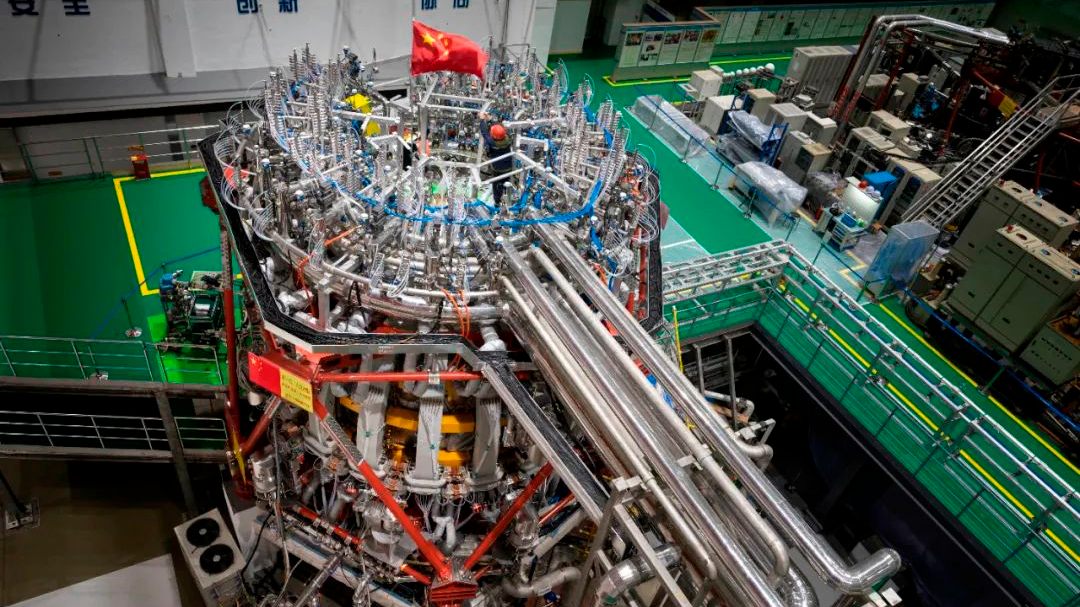
A total of 20 major scientific and technological achievements were unveiled on Tuesday, wrapping up this year's Zhongguancun Forum.
The achievements include four sectors, relating to science, the economy, major needs of the country's development and people's life and health, with each sector releasing five representative items.
The achievements involved satellites, a vision-language model, chips, silicon photonic systems and China's high-energy synchrotron radiation light source.

The hard X-ray of a C-class solar flare (in squares) captured by China's ASO-S' HXI on November 11, overlaid on the imaging of the sun's atmosphere, or chromosphere (bottom), observed by NASA's Solar Dynamics Observatory (SDO) imaged at the same time. /CAS
Kuafu-1
China's first multipurpose solar probe Kuafu-1, or the Advanced Space-based Solar Observatory, captured its first batch of hard X-ray imaging of the solar flares in 2022.
The images, taken by one of its three payloads, Hard X-ray Imager, were the only images in the world to capture solar hard X-rays from the angle of Earth.
So far, more than 200 solar flares have been observed, Gan Weiqun, the satellite's principal scientist from the Purple Mountain Observatory under the Chinese Academy of Sciences (CAS), said at a press conference on Tuesday, adding that the images achieved world-class quality.
The observatory's satellite observation data was opened for trial use in April.
Read more: China unveils first batch of images taken by solar probe ASO-S

Beijing Academy of Artificial Intelligence's SegGPT model at the Zhongguancun Forum, May 24, 2023. /Official website of Beijing Science and Technology News Agency
Vision-language model
The SegGPT (Segment Everything In Contex), a generalist vision-language model introduced by the Beijing Academy of Artificial Intelligence, can handle various segmentation data types by converting them to a certain picture format.
With the ability of contextual reasoning, it can automatically reason and segment tasks by providing examples, including texts, faces and outlines in images and videos, according to a report by The Paper.
Its supports any number of visual prompts, it added.
Huang Tiejun, head of the private non-profit organization engaged in AI research and development, said the model will help driverless cars and robots serve people more quickly.

A 30-micron-thick bending glass is displayed at the Fifth International Import Expo in Shanghai, China, November 10, 2022. /CFP
A foldable glass and sodium-ion battery were also among the achievements presented.
30-micron-thick flexible foldable glass
As thin as a quarter of a piece of A4 paper, the 30-micron-thick flexible foldable glass was developed by a team led by Peng Shou, an academician of the Chinese Academy of Engineering and chief engineer of China Building Materials Group Co. Ltd. (CBMG).
With a bending radius of 0.5 millimeter – The Verge in 2020 said Samsung's Z Flip can bend to a 5 mm radius – the glass can bend more than 1 million times, leading the world in core performance indicators, according to Zhang Shaobo, deputy general manager of CBMG's Triumph Science and Technology Co. Ltd..
The bending glass will be applied in mobile phones, vehicle displays, smart wearables, integrated circuits and other fields, Zhang said.
The first-phase production line has realized mass production, and products equipped with the glass will be released in the second half of the year, Zhang added.
Sodium-ion battery
Developed by the Institute of Physics of the Chinese Academy of Sciences, the sodium-ion batteries have been demonstrated in short-range electric vehicles and 1 megawatt-hour sodium-ion battery energy storage power stations, according to the China Securities Journal.
With the sodium-ion battery, the newly released electric vehicle is able to cover 252 kilometers on a charge and is capable of charging in 15 to 20 minutes, said Lu Yaxiang, an associate researcher at the institute.

China's new-generation "artificial sun," the HL-2M Tokamak. /CNNC
'Artificial sun'
In "China's Silicon Valley," innovations and breakthroughs have emerged to serve major national requirements, including China's new-generation "artificial sun," the HL-2M Tokamak, that belongs to the Southwestern institute of Physics under China National Nuclear Corporation.
Based on an approach called "magnetic confinement fusion" that uses magnetic fields to confine fusion fuel in the form of plasma, the plasma current of the "artificial sun" has exceeded one million amperes.
Read more: China's new-generation 'artificial sun' makes a breakthrough

A view of "Revive-I," China's first domestically developed extracorporeal membrane oxygenation (ECMO) device, powered by rocket technology. /Xinhua
ECMO
Powered by rocket technology, China's first domestically-developed extracorporeal membrane oxygenation (ECMO) device, "Revive-I," was launched in February.
Being a type of artificial heart and lung machine, the device can provides prolonged cardiac and respiratory support to a patient outside the body.
Read more: China's first homegrown life support device with rocket tech hits market (CGTN)

86-10-68597521 (day)
86-10-68597289 (night)

52 Sanlihe Rd., Xicheng District,
Beijing, China (100864)

